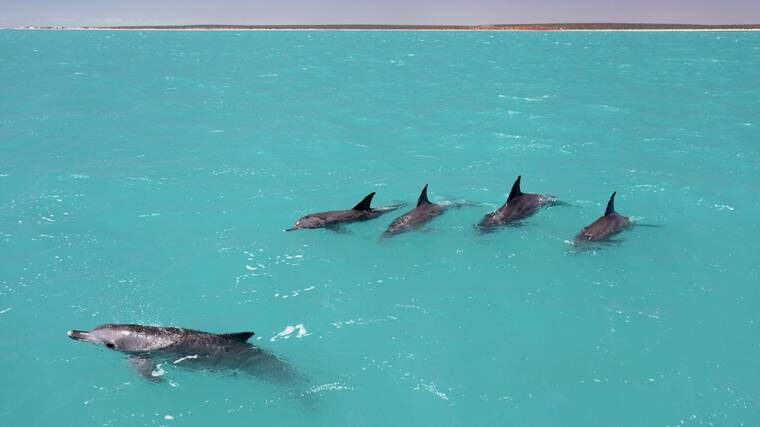
"It is a ground-breaking study," says Luke Rendell, a behavioral ecologist at the University of St. Andrews who was not involved with the research. The work adds evidence to the idea that dolphins evolved large brains to navigate their complex social environments.
Male dolphins typically cooperate as a pair or trio, in what researchers call a "first-order alliance." These small groups work together to find and corral a fertile female. Males also cooperate in second-order alliances comprised of as many as 14 dolphins; these defend against rival groups attempting to steal the female. Some second-order alliances join together in even larger third-order alliances, providing males in these groups with even better chances of having allies nearby should rivals attack.
Dolphins often switch partners in their first-order alliances, but they maintain the allies in the second-order groups for decades, according to long-term behavioral studies at Shark Bay in Western Australia. These groups are considered the core unit of the males' society. The males "stay together for their lifetimes," at least as long as 40 years, notes Stephanie King, a behavioral biologist at the University of Bristol.
But how do the males keep track of everyone in these complex groups?
Scientists have argued that their whistles are key. Every dolphin learns a unique signature whistle from its mother, which it keeps for life; dolphins recognize and remember each others' whistles, similar to how we recognize each other's names.
To further investigate how the male dolphins use their whistles, King and her colleagues turned to a population of Indo-Pacific bottlenose dolphins (Tursiops aduncus) living in the remarkably clear waters of Shark Bay. The team has tracked the animals with an array of underwater microphones since 2016, enabling them to identify which dolphin produces which whistle.
From 2018 to 2019, the researchers placed a speaker underwater and played the whistles of males to other males in their various alliances. These males ranged in age from 28 to 40 years old, and had been in these groups their entire lives. Meanwhile, the scientists flew a drone overhead to film the dolphins' responses.
The researchers expected that males hearing the whistle of their first-order alliance partners would respond most strongly. But when they reviewed the videos, they found the strongest responses came from males in the dolphins' second-order alliances — animals who had a steadfast cooperative history of fighting off attackers with them (as seen in the video above), they report today in Nature Communications.
"It was so striking," says King, lead author of the study. "In 90% of experiments, dolphins who heard whistles of second-order alliance members turned immediately and directly toward the speaker." The findings, she says, suggest dolphins — like humans — have a "social concept of team membership, based on an individual's previous cooperative investment, rather than how good friends they are."
This "paper provides the missing link" between the male dolphins' signature whistles and their cooperative alliances, says Frants Jensen, a behavioral ecologist at the Woods Hole Oceanographic Institution who was not involved with the work. Jensen and others predict the researchers' high-tech approach will help scientists unlock other mysteries of cetacean communication.
For example, dolphin females whistle, too. What are they talking about?



Comment: See also: Enigmatic circling behavior observed in numerous marine animals